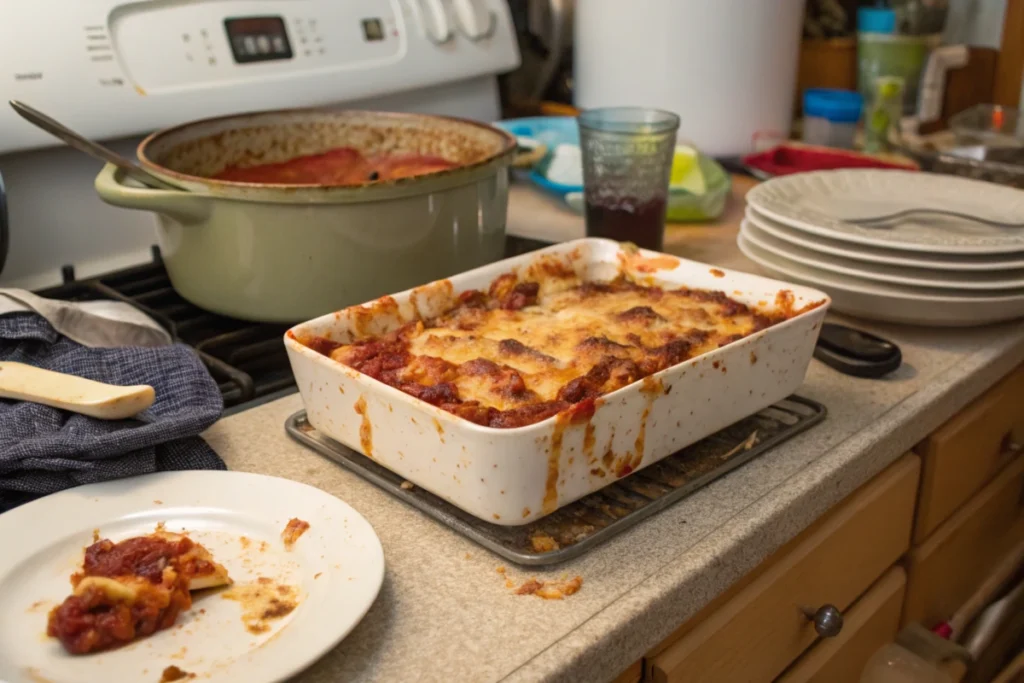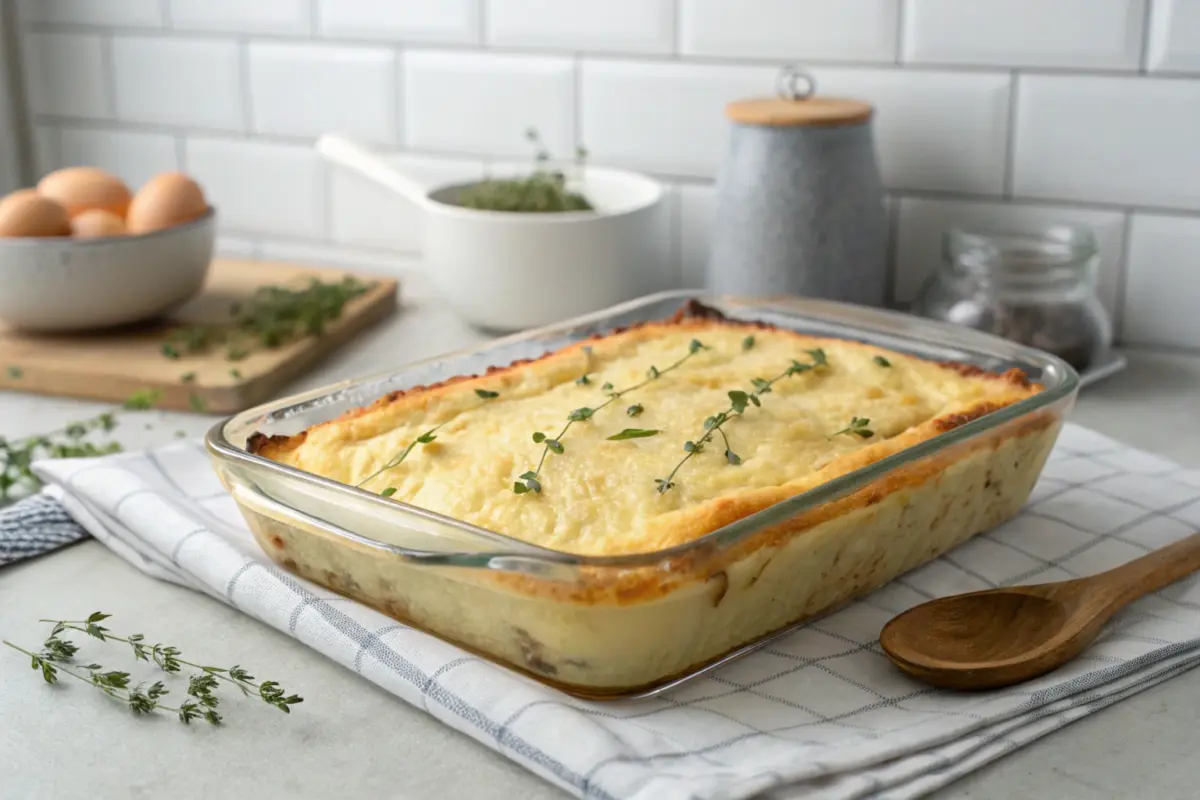Introduction
Cottage cheese is a versatile ingredient that often flies under the radar. While it’s mostly known for its creamy texture and use in cold dishes, baking with cottage cheese transforms it into something entirely different. But what exactly happens when you expose it to heat? This article dives into the science, the texture changes, and the endless possibilities of baked cottage cheese. Whether you’re a foodie or just someone curious about experimenting in the kitchen, understanding the basics of this transformation can change the way you use this humble cheese.
Understanding the Composition of Cottage Cheese
The Role of Milk Proteins in Cottage Cheese
Cottage cheese is made from milk that has been curdled and separated into curds and whey. The curds, rich in milk proteins like casein and whey, are the stars of the show. When baked, these proteins undergo a process called denaturation, where their structure changes and they firm up. This is why baked cottage cheese takes on a firmer, more solid texture compared to its creamy, uncooked state. If you’ve ever noticed the satisfying, slightly chewy consistency of baked cheese, that’s the proteins doing their magic.
Moisture Content and Its Impact on Cooking
Moisture plays a big role in how cottage cheese reacts to heat. Unlike hard cheeses like cheddar, cottage cheese has a high water content, which can influence its behavior in the oven. During baking, the moisture evaporates, leaving behind a denser and more compact result. If you’re working with regular cottage cheese, the excess water can sometimes make the dish a little runny. That’s why many recipes call for draining or pressing the cheese before using it in baked dishes. It’s a small step that makes a big difference in texture and consistency.
How Heat Affects Cottage Cheese
Protein Denaturation and Firming Process
When cottage cheese is heated, its proteins unfold and link together, a process known as denaturation. This causes the cheese to firm up as it cooks. Think of it like cooking an egg—at first, the whites are runny, but heat turns them solid. The same thing happens to cottage cheese, although the process is a bit slower due to its high water content. This change is what makes baked cottage cheese a great choice for recipes that need structure, like casseroles or soufflés.
Changes in Texture: From Creamy to Solid
If you’ve ever baked cottage cheese, you know the texture shift is dramatic. Straight out of the tub, cottage cheese is creamy and slightly lumpy. But after a trip to the oven, it becomes more cohesive, with a chewy, slightly crispy exterior depending on how it’s baked. This makes it a fantastic addition to recipes where you want a balance between creaminess and firmness. For example, in casseroles, it holds its shape while blending seamlessly with other ingredients.
The Science Behind Browning and Crisping
Ever noticed how baked cheese gets those golden-brown edges that everyone loves? That’s thanks to the Maillard reaction, a chemical process that occurs when proteins and sugars in the cheese are exposed to heat. In cottage cheese, this reaction adds a layer of flavor and texture, creating crispy edges and a deeper, more savory taste. While cottage cheese doesn’t brown as quickly as hard cheeses due to its higher moisture content, when it does, it’s worth the wait. To encourage browning, bake at a higher temperature or consider brushing the surface with a bit of butter or oil.
Popular Recipes Using Baked Cottage Cheese

Cottage Cheese Casseroles
Cottage cheese casseroles are a favorite for many home cooks because they’re simple, filling, and packed with flavor. You can pair cottage cheese with vegetables, pasta, or grains like rice or quinoa to create a balanced meal. Imagine a cheesy, hearty vegetable casserole fresh out of the oven with a golden-brown top. That’s the magic of baked cottage cheese. Plus, its creamy consistency helps bind ingredients together, making every bite cohesive and delicious.
Baked Cottage Cheese Flatbread
Flatbreads with cottage cheese are perfect for a quick and easy dinner or a fun weekend snack. You start with a simple dough or a store-bought flatbread, spread a generous layer of seasoned cottage cheese on top, and bake it until the edges are crisp and the cheese is lightly browned. It’s like a healthier, protein-packed twist on pizza. Add toppings like spinach, cherry tomatoes, or even a sprinkle of mozzarella for extra flavor, and you’ve got a winner.
Cottage Cheese Soufflé
If you’re feeling fancy, a cottage cheese soufflé is the way to go. Light, airy, and surprisingly easy to make, this dish showcases the versatility of baked cottage cheese. By folding whipped egg whites into the cottage cheese mixture, you get a fluffy texture that rises beautifully in the oven. It’s a show-stopper at brunches or dinner parties, and you can customize it with herbs, spices, or even a hint of nutmeg for a sweet variation.
For another delightful way to bake cottage cheese, try this Cottage Cheese Egg Bake recipe, which adds even more flavor and convenience to your kitchen experiments.
Common Challenges When Baking Cottage Cheese
Preventing Watery Consistency
One common issue when baking with cottage cheese is the excess water content. If not handled properly, it can make your dish soggy or watery. The easiest fix? Drain the cottage cheese before using it. You can do this by placing it in a fine-mesh strainer or cheesecloth for a few minutes to remove the extra liquid. For recipes where a firmer texture is key, like flatbreads or casseroles, this step is a game-changer.
Achieving the Perfect Browning
Getting that beautiful golden-brown finish can be tricky with cottage cheese because of its moisture. To help it along, bake your dish at a slightly higher temperature, usually around 375°F to 400°F. Brushing the top with a light coat of butter or olive oil can also speed up browning. Patience is key here—let the oven work its magic, and you’ll be rewarded with a perfectly crispy, caramelized top layer.
Flavor Enhancements and Pairings
While cottage cheese has a mild, slightly tangy taste, it pairs beautifully with a variety of flavors. To boost the taste, try adding fresh herbs like basil, dill, or parsley. For a savory twist, sprinkle in garlic powder, black pepper, or smoked paprika. If you’re leaning toward sweet, mix in a touch of cinnamon, vanilla, or honey.
Cottage cheese also works wonderfully in egg-based dishes, enhancing both flavor and nutrition. Discover why cottage cheese is a great addition to eggs to unlock its full potential in your recipes.
Nutritional Benefits of Baked Cottage Cheese
High-Protein Content for Muscle Building
One of the exciting things about cottage cheese is how it retains its high protein content even after baking. So, what happens to cottage cheese when you bake it? It firms up, offering a chewy, satisfying texture that’s perfect for those looking to increase their protein intake. Adding baked cottage cheese to your meals provides a filling and nutritious boost without compromising on taste.
Low-Calorie Option for Weight Management
Curious about what happens to cottage cheese when you bake it in low-calorie dishes? It transforms into a flavorful, healthy option that feels indulgent but fits your weight management goals. Baking cottage cheese with vegetables or whole grains creates a nutrient-packed meal that’s both delicious and satisfying.
Vitamins and Minerals Retained After Baking
Baking doesn’t strip away the nutrients in cottage cheese, which is great news for anyone wondering, What happens to cottage cheese when you bake it? You still get a healthy dose of calcium, B vitamins, and phosphorus, making baked cottage cheese a nutritious choice for any meal.
Creative Ways to Incorporate Baked Cottage Cheese
As a Snack or Appetizer
Thinking about what happens to cottage cheese when you bake it for snacks? It turns into a firm, flavorful base that pairs wonderfully with crackers, veggie sticks, or bread. Bake it with some herbs and spices for a protein-packed appetizer that’s perfect for entertaining or an everyday treat.
If you’re looking for a sweet twist on cottage cheese recipes, explore what goes into making Churro Cheesecake. It’s a creative way to incorporate cottage cheese into dessert-style dishes, delivering both protein and indulgence.
As a Base for Healthy Meals
When baking cottage cheese as a meal base, the magic lies in its transformation. What happens to cottage cheese when you bake it in stuffed peppers or lasagna? It binds the ingredients beautifully while delivering a creamy yet firm texture that elevates the dish. It’s a simple way to create meals that are both hearty and healthy.
Adding to Sweet Dishes
Baked cottage cheese isn’t just for savory recipes. What happens to cottage cheese when you bake it with a touch of honey or cinnamon? It becomes a dessert-friendly ingredient that pairs beautifully with roasted fruits or can even be baked into breakfast casseroles. It’s a versatile option for those with a sweet tooth who still want a protein-rich treat.
FAQ
Does cottage cheese melt when you bake it?
Does cottage cheese melt when you bake it? No, it doesn’t melt like traditional cheeses. Instead, it firms up, adding a unique texture that works well in baked dishes like casseroles and flatbreads.
What does cottage cheese do in baking?
What happens to cottage cheese when you bake it in recipes? It acts as a creamy binder, adds moisture, and brings a mild flavor that balances beautifully with other ingredients. It’s a versatile ingredient that works in both sweet and savory dishes.
Can cottage cheese go in the oven?
Yes, cottage cheese can go in the oven, and it holds up beautifully. When baked, it transforms into a firmer, more cohesive texture that’s perfect for recipes like casseroles or soufflés. So if you’re asking, What happens to cottage cheese when you bake it?—the answer is delicious results.
Does cottage cheese lose protein when cooked?
Does cottage cheese lose protein when cooked? Absolutely not. The protein remains intact, so you’re still getting all the benefits. That’s part of what makes baked cottage cheese such a fantastic option for healthy meals and snacks.
Conclusion
In summary, cottage cheese undergoes a remarkable transformation when baked. Its creamy texture firms up, turning into a versatile ingredient that works well in both savory and sweet dishes. Whether you’re using it in casseroles, flatbreads, or even desserts, baked cottage cheese provides a unique balance of flavor, texture, and nutrition. The process enhances its natural qualities, making it an excellent choice for anyone looking to create wholesome, satisfying meals.
Moreover, it’s worth noting that baking does not compromise its nutritional value. Cottage cheese retains its high protein content, essential vitamins, and minerals even after being exposed to heat. This makes it a smart option for health-conscious individuals who want to enjoy delicious food without sacrificing their dietary goals.
If you’ve been hesitant to bake with cottage cheese, now is the perfect time to experiment. Start with simple recipes like casseroles or appetizers, and let your creativity guide you to more elaborate dishes. With its ability to adapt to a variety of flavors and cooking methods, cottage cheese proves itself as an underrated star in the kitchen. So, grab that tub of cottage cheese, preheat the oven, and discover just how incredible baked cottage cheese can be!


1 thought on “What Happens to Cottage Cheese When You Bake It?”